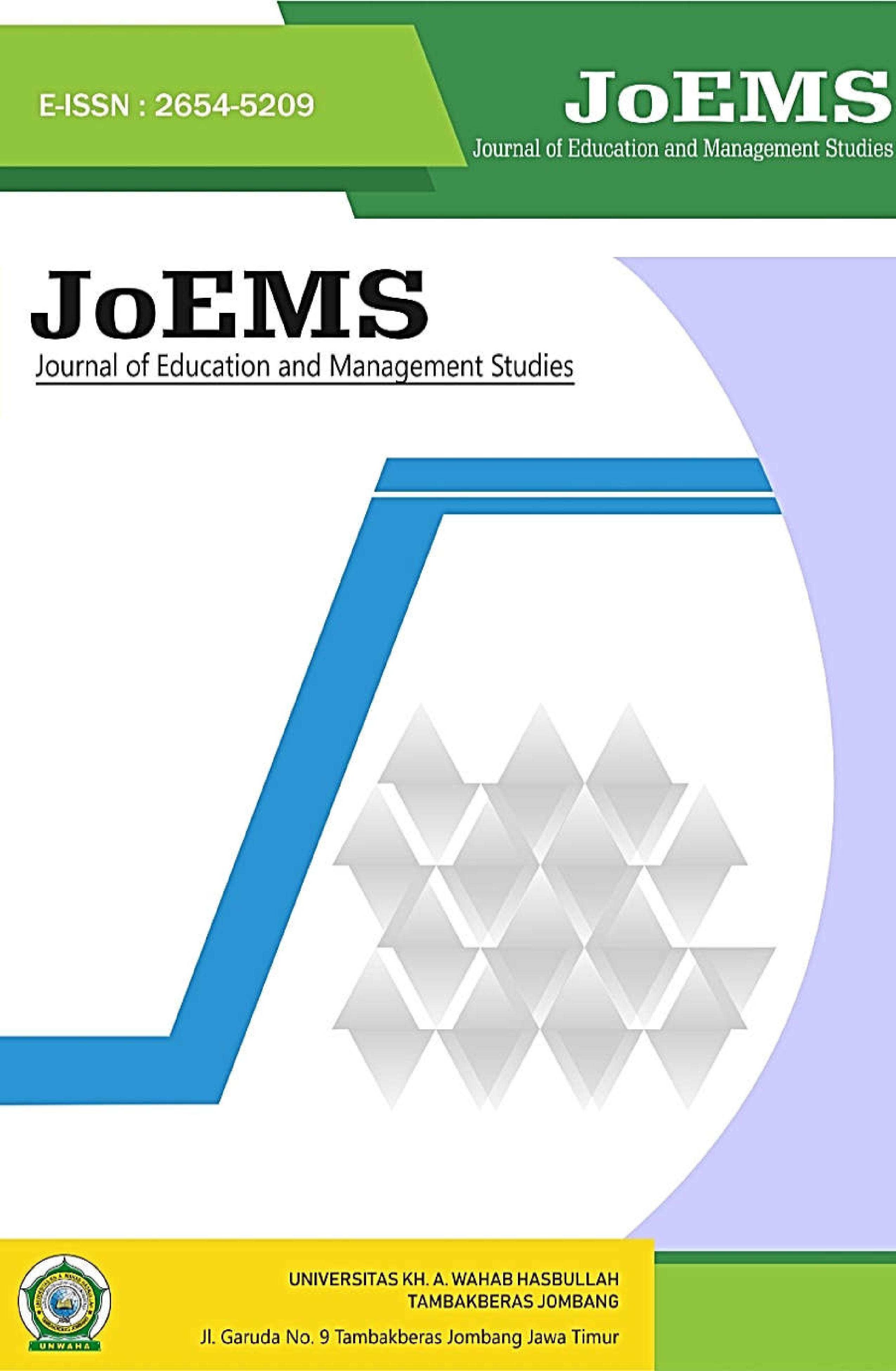Pengembangan Pengembangan Bahan Ajar Akhlak Berbasis Make a Match Kelas XI di MA Al Bairuny Jombang
DOI:
https://doi.org/10.32764/joems.v7i3.1161Keywords:
Development of Teaching Materials, Learning Model, Make a MatchAbstract
This research aims to develop Moral teaching materials based on the Make a Match learning model for class XI at MA Al Bairuny and evaluate the level of validity and feasibility. Apart from that, this research also aims to assess students' responses to the teaching materials developed. It is hoped that the results of this research can provide benefits in improving the quality of Moral learning for students, teachers, schools and researchers. The method used in this research is the ADDIE development model, which includes the steps of Analysis, Design, Development, Implementation, and Evaluation. The data collection instruments used were validation questionnaires and student response questionnaires. Data analysis techniques include validation questionnaire data analysis and user response data analysis. Based on the research conducted, the results show that the Make a Match-based Moral teaching materials at MA Al Bairuny received a percentage of scores from validators of 87.1% and 77.7%, which shows that these teaching materials are valid and very suitable for use. Apart from that, students' responses to the teaching materials also showed positive results. The conclusion of this research is that Make a Match-based Moral teaching materials are effective and suitable for use in the learning process at MA Al Bairuny Jombang..
References
Asfahani. (2019). Model Pengembangan Bahan Ajar Aqidah Akhlak (Studi Kasus Di Kelas Reguler Dan Kelas Akselerasi MTs Negeri Ponorogo). Qalamuna - Jurnal Pendidikan, Sosial, Dan Agama, Vol 11, No 1, 83-92.
Bahroni, M. (2018). Analisis Nilai-Nilai Pendidikan Akhlak Dalam Kitab Taisirul Khalaq Karya Syaikh Khafidh Hasan Al-Mas’udi. Jurnal Pendidikan Dan Studi Keislaman, Vol 8, No 3, 343-356.
Bonwell, C. C. (1991). Active Learning: Creating Excitement in the Classroom. ERIC Clearinghouse on Higher Education.
Cheung, A. C. (2012). How Features of Educational Technology Programs Affect Student Reading Outcomes: A Meta-Analysis. . Educational Research Review, Vol 7, No 3, 198-215.
Dewey, J. ( 1938). Experience and Education. . Kappa: Kappa Delta Pi.
Dick, W. C. (2005). The Systematic Design of Instruction. perason.
Hattie, J. (2008). Visible Learning: A Synthesis of Over 800 Meta-Analyses Relating to Achievement. Routledge.
Johnson, D. W. (2014). Cooperative Learning: Improving University Instruction by Basing Practice on Validated Theory. . Journal on Excellence in College Teaching, Vol 25 No 3&4, 85-118.
Mardian, A. (2012). Pengembangan Media Pembelajaran Berbasis E-Learning Pokok Bahasan Evolusi pada Mata Pelajaran Biologi Kelas XII MAN Trenggalek. Malang : Skripsi Tidak Diterbitkan, 50.
Maydiantoro, A. (2019). Model-Model Penelitian Pengembangan (Research and Development). Jurnal Metode Penelitian, Vol 10, 1-9.
Mayer, R. E. (2009). Multimedia Learning. Cambridge: Cambridge University Press.
Michaels, S. &. (2012). Talk Science Primer . Cambridge: MA: TERC.
Molenda, M. (2003). In search of the elusive ADDIE model. . Performance Improvement, Vol 42 No 5, 34-36.
Mutmainnaha, W. N. (2022). Implementation of Make a Match (MaM) Learning Model to the Nomenclature of Common Chemical Compounds on Motivation and Learning Activities of Class X SMA Negeri 1 Turi. InternationalJournalofChemistryEducationResearch–Vol.6,lss.1,, 45-51.
Piaget, J. (1973). To Understand is to Invent: The Future of Education. Grossman Publishers.
Prince, M. (2004). Does Active Learning Work? A Review of the Research. Journal of Engineering Education, Vol 93 No 3, , 223-231.
Reiser, R. A. (2017). Trends and Issues in Instructional Design and Technology. . Pearson.
Rosidha, A. (2020). Peningkatan Aktivitas Dan Hasil Belajar Siswa Pada Mata Pelajaran Biologi Melalui Model Pembelajaran Make and Match Berbasis Media Karu Pintar. Jurnal Paedagogy, Vol 7, No 4, 393.
Rosy, H. F. (2020). Analisis Model Pembelajaran Make a Match Terhadap Hasil Belajar Siswa. Jurnal Pendidikan Administrasi Perkantoran (JPAP), Vol 9. No 2, 321-341.
Shakila, D. (2020). Pengembangan Media Pembelajaran Video Berbasis Youtube Untuk Pembelajaran Jarak Jauh Pada Tema 4 Subtema 3 Pembelajaran 1 Kelas Iv Sekolah Dasar. Universitas Jambi, 22.
Slavin, R. E. (2015). Cooperative Learning in Elementary Schools. Education 3-13, Vol 43, No 1, 5-14.
Sugiyono. (2013). Metode Dan Tehnik Penelitian. Journal of Chemical Information and Modeling, Vol 53, No 9 , 1689–99.
Sulistiawati. (2019). Penerapan Model Pembelajaran Cooperatif Learning Tipe Make a Match Untuk Meningkatkan Hasil Belajar Aqidah Akhlak Pada Siswa Kelas III MI YPI Umbul Bandung Desa Tanjung Ratu Kec. Katibung Tahun Pelajaran 2018/2019. Skripsi, 100.
Vygotsky, L. S. (1978). Mind in Society: The Development of Higher Psychological Processes. Harvard: Harvard University Press.







